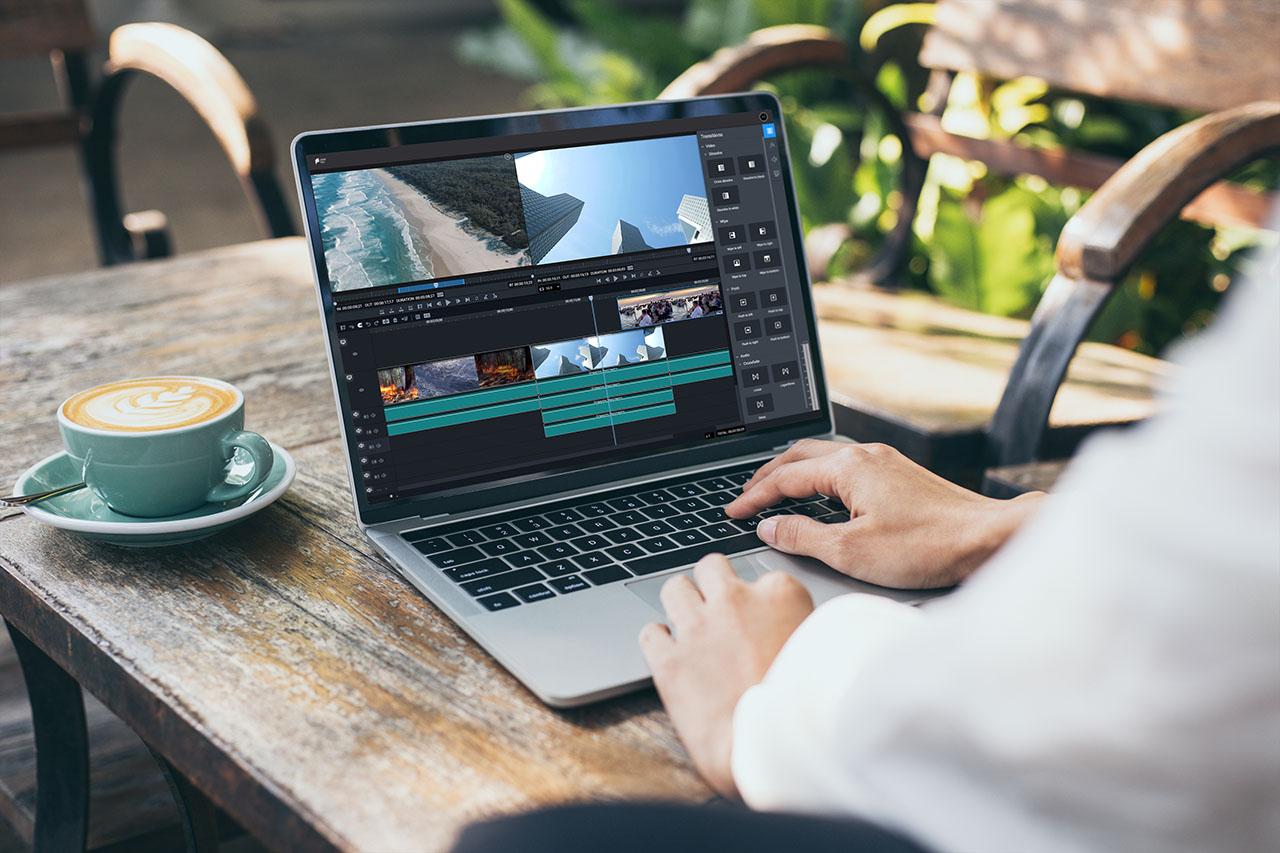The COVID-19 pandemic saw travelers around the world grounded for the better part of two years. The tourism industry experienced staggering losses in revenue as a result. Now, as travel restrictions loosen, video content distributed across a range of channels becomes a required strategy to revitalize interest in travel and tourism.
From incredible footage of mountain views and panoramic seascapes, video content as seen in shows like Moving Pictures and A World of Calm makes the booking of a trip happen. With this targeted content, trip brokers are now leveraging social video platforms, over-the-top (OTT) streaming services, over-the-air (OTA) broadcasts, and popular augmented reality/virtual reality (AR/VR) channels in order to attract would-be globetrotters.

Viral Vacation Movies: Social Video Platforms
Travel videos are key during the “Dreaming Stage” of the traveler’s planning with so many of us having been stuck in that planning stage for the last several years. If the content is inspiring and delivered efficiently, the potential exists to reengage high-value customers whose passports have been gathering dust during the pandemic. Visual storytelling is a powerful way to build a relationship with potential travelers. A well-produced travel video is just about as close as potential clients can come to experience a travel organization’s packages firsthand, Untethered Media points out. Capturing footage of familiar, iconic cities like New York, Paris, or London entices people to travel. Many trip planners, excursion agents, and others in the travel industry actively solicit video footage from their previous clients, repurposing home movies as quick and polished promotional materials for destinations abroad. Not only will a travel broker’s marketing team have to manage all these videos fine-tuned for different social campaigns, but the associated metadata, too.
TikTok, a platform at one time reliant on dance videos, lip-syncing, and animal tricks for viewers, has evolved into to a tool with broader marketing power and the viewers to match. Don’t worry, there’s still plenty of pet videos, but now there’s global interest in TikTok from the travel marketing community. Hashtags such as #travel and #tiktoktravel are seeing more than 50 billion views combined, Skift.com reports. TikTok’s algorithm, however, represents a challenge to content creators. The content needs to be app specific and not a reworking of content previously posted for it to be exposed to as many viewers as possible.
Then there is YouTube, still the place for long-form video online and a powerful solution for travel marketers. Averaging 14.3 billion visits a month, according to the Hootsuite blog, it only makes sense to cultivate a strong presence on the platform. Travel brokers are taking the opportunity to build on YouTube a relationship between themselves and potential tourists. Video optimization on these travel channels — keywords, video descriptions, assorted thumbnails, and relevant content associations — are essential, as ReelnReel points out. Dalet Flex can manage it all, whether it is producing a multitude of video shorts optimized for TikTok or managing longer-form content for YouTube, running seamless workflows enabling travel organizations to get media optimized and online faster and with greater frequency.

Over-the-Top TV (OTT) and Streaming Services and Over-the-Air (OTA) Broadcasts
About 76% of OTT television streamers watch on an ad-supported platform. Content here tends to be highly focused to specific audiences. The benefit here is that travel marketers are able to create advertisements, campaigns, and even full-on content that will reach viewers who want to visit specific destinations or use an advertised tourism organization to create their ideal adventure. Offerings such as the earlier mentioned Moving Art which, for several seasons, provided breathtaking footage of locations such as Thailand, New Zealand, and Canada; while A World of Calm, produced specifically for those feeling the walls close in during the pandemic, showcased beautiful vistas with soothing narration from Keanu Reeves, Oscar Isaac, Nicole Kidman, and others. For the travel marketing campaign, these sorts of shows are direct sales to destinations abroad. To accomplish this not only requires the content, but the data as well to make the linkage across searches, viewers, and channels. All of the content and associated dynamic metadata need to be organized in a meaningful and accessible way and benefit from AI-driven solutions like Dalet Flex.
These kind of documentary-style, nature and environment productions appeal to audiences across demographics. Older audiences traveling through retirement, younger viewers collecting experiences after college — the reach of these channels is wide and varied. Until a time where viewers move entirely to streaming solutions, marketers must include these potential viewers as part of their campaign as well.

Seeing the World from Home: Virtual Tourism
Much like with YouTube, VR is used in the pre-trip “dreamer” stage in tourism, with people looking at where they might want to go. Kuoni’s, a tourism operator, offers potential customers the ability can take a 360-degree tour of the upmarket Sandy Lane luxury resort in Barbados, an article in the Guardian notes. It’s also important to mention that 360 and 180 VR content is available on YouTube.
As Immersion VR, creator of VR content for marketing accurately, states: one of the greatest strengths of VR is allowing the user to experience the feeling of “being there.” 360 VR content is one of the most common methods out there and is accessible not in just headsets but can also be accessed with mobile devices. Although VR projects take more time to produce and are typically more expensive, they provide a more immersive travel experience. These videos feature head tracking so the user can move their head to explore the surroundings in a realistic way, Immersion VR explains.
What better way to inspire someone to get their suitcases out of the attic then allowing them to stand on that sun-soaked beach in VR?

How Does the Travel Industry Make Sense of All this Content?
To run effective and sustainable video marketing operations, travel marketers and multimedia content producers should look at Dalet Flex when it comes to multiplatform distribution. Powering video campaigns with Dalet Flex offers businesses the ability to easily capitalize on social platforms, and then offer content for OTT advertising solutions utilized by streaming providers. Dalet Flex can also take your content into the broadcast television arena, and even further into Virtual Reality. Destination videos, testimonials, and 360 tours of locations, and more traditional advertisements all call for media asset management, metadata, and safe archiving, all of which Dalet Flex provides.
To effectively leverage these assets and create engaging campaigns, content must be indexed and tagged in meaningful ways and must be accessible to producers across systems and locales. AI-powered, cloud-based content management and supply chain platforms like Dalet Flex become invaluable in taking advantage of the large, diverse content libraries that are so commonplace in the travel and tourism industry and that will be only grow in years to come.

As for today, travel and tourism need that extra boost and a good video campaign will make the difference between someone choosing yet another stay-cation versus getting out of the house and seeing the world that’s been waiting the last several years.
Featured in: Dalet Flex | Digital Asset Management | Multiplatform Distribution | Multiplatform Production | Video Asset Management | Virtual Reality |
Guest blogger Phil Rossi is a professional business analyst, author, musician, digital content creator, and virtual reality evangelist. Over the last two decades, he has written several novels including two Amazon best-sellers and has produced multiple successful podcasts. Phil is passionate about the intersection between art and technology and the opportunities that it creates for story-telling.
More Articles By Phil



